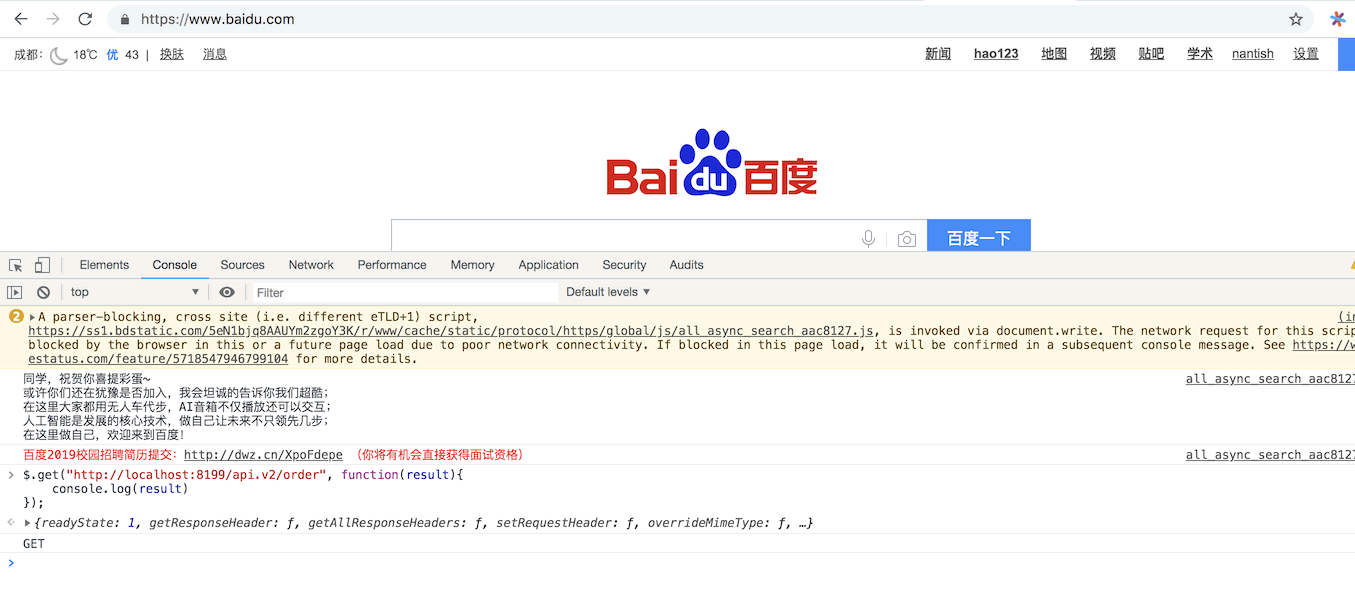- 请求输出
- 实现允许跨域请求
- 实现允许跨域请求
请求输出
数据输出对象定义如下:
// 服务端请求返回对象。// 注意该对象并没有实现http.ResponseWriter接口,而是依靠ghttp.ResponseWriter实现。type Response struct {ResponseWriterlength int // 请求返回的内容长度(byte)Server *Server // 所属Web ServerWriter *ResponseWriter // ResponseWriter的别名request *Request // 关联的Request请求对象}
可以看到ghttp.Response对象继承了标准库的http.ResponseWriter对象,因此完全可以使用标准库的方法来进行输出控制。
当然,建议使用ghttp.Response封装的方法来控制输出,ghttp.Response的数据输出使用Write*相关方法实现,并且数据输出采用了Buffer机制,数据的处理效率比较高,任何时候可以通过OutputBuffer方法输出缓冲区数据到客户端,并清空缓冲区数据。
相关方法(API详见: godoc.org/github.com/gogf/gf/g/net/ghttp#Response):
func (r *Response) Buffer() []bytefunc (r *Response) BufferLength() intfunc (r *Response) ClearBuffer()func (r *Response) ContentSize() intfunc (r *Response) OutputBuffer()func (r *Response) SetBuffer(buffer []byte)func (r *Response) RedirectBack()func (r *Response) RedirectTo(location string)func (r *Response) ServeFile(path string)func (r *Response) ServeFileDownload(path string, name ...string)func (r *Response) SetAllowCrossDomainRequest(allowOrigin string, allowMethods string, maxAge ...int)func (r *Response) CORS(options CORSOptions)func (r *Response) CORSDefault()func (r *Response) Write(content ...interface{})func (r *Response) Writef(format string, params ...interface{})func (r *Response) Writefln(format string, params ...interface{})func (r *Response) Writeln(content ...interface{})func (r *Response) WriteXml(content interface{}, rootTag ...string) errorfunc (r *Response) WriteJson(content interface{}) errorfunc (r *Response) WriteJsonP(content interface{}) errorfunc (r *Response) WriteStatus(status int, content ...string)func (r *Response) WriteTpl(tpl string, params map[string]interface{}, funcmap ...map[string]interface{}) errorfunc (r *Response) WriteTplContent(content string, params map[string]interface{}, funcmap ...map[string]interface{}) errorfunc (r *Response) ParseTpl(tpl string, params map[string]interface{}, funcmap ...map[string]interface{}) ([]byte, error)func (r *Response) ParseTplContent(content string, params map[string]interface{}, funcmap ...map[string]interface{}) ([]byte, error)
此外,需要提一下,Header的操作可以通过标准库的方法来实现,例如:
r.Header().Set("Content-Type", "text/plain; charset=utf-8")
实现允许跨域请求
我们可以使用CORS或者CORSDefault来实现服务端允许跨域请求。
SetAllowCrossDomainRequest也是跨域使用的方法,新版本中已废弃。
CORS方法允许开发者自定义跨域请求参数,参数类型为CORSOptions对象;CORSOptions定义:// See https://www.w3.org/TR/cors/ .// 服务端允许跨域请求选项type CORSOptions struct {AllowOrigin string // Access-Control-Allow-OriginAllowCredentials string // Access-Control-Allow-CredentialsExposeHeaders string // Access-Control-Expose-HeadersMaxAge int // Access-Control-Max-AgeAllowMethods string // Access-Control-Allow-MethodsAllowHeaders string // Access-Control-Allow-Headers}
CORSDefault方法使用默认的跨域选项配置来设置跨域,大部分情况下使用该方法即可;使用示例:
package mainimport ("github.com/gogf/gf/g""github.com/gogf/gf/g/frame/gmvc""github.com/gogf/gf/g/net/ghttp")type Order struct {gmvc.Controller}func (o *Order) Get() {o.Response.Write("GET")}func main() {s := g.Server()s.BindHookHandlerByMap("/api.v2/*any", map[string]ghttp.HandlerFunc {"BeforeServe" : func(r *ghttp.Request) {r.Response.CORSDefault()},})s.BindControllerRest("/api.v2/{.struct}", new(Order))s.SetPort(8199)s.Run()}
随后随便找个支持
jQuery的站点(例如:https://www.baidu.com ),使用F12快捷键打开console窗口,执行以下Javascript指令检测是否跨域请求成功:$.get("http://localhost:8199/api.v2/order", function(result){console.log(result)});
效果如下:

